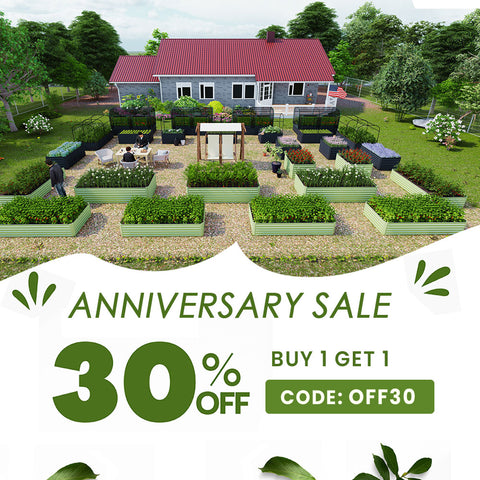Use these tips to make smart selections from seed catalogs and garden stores and you'll be harvesting a bounty of vegetables in no time.The following content also has some reference value for raised garden beds.

There's something about a fresh packet of seeds that feels filled with possibility for the upcoming growing season. And there are so many exciting varieties of vegetables, herbs, and even edible flowers to try out that paging through a seed catalog can make you feel like a kid in a candy story. However, it's easy to go a little overboard and end up with more seeds than you really need or ones that won't actually do well in your garden. You can avoid these pitfalls by keeping a few things in mind about which seeds are best for your needs and when to acquire them so you can start them at the right time.
1. Winter Is the Best Time to Buy Seeds
Many vegetable garden plants can be started from seeds while it's still cold and snowy outside. The trick, of course, is to sow them indoors and then transplant them into your garden once the soil has warmed up again in spring. Cool-weather plants, such as cabbage and broccoli, especially benefit from a jump-start indoors so they have a chance to bloom and produce a crop before the heat of summer shuts them down. Warm-season crops, such as tomatoes and bell peppers, also can be started under grow lights and moved into the garden after your area's frost-free date so they'll produce an earlier and longer harvest for you. A grow light can be as simple as a fluorescent shop light hung just inches over your seed trays.
2. Consider Your Space
When trying to decide which seeds to buy, figuring out how much room you have for growing them will help you narrow down the choices. If you have a small garden, you may want to avoid space-hogging vegetables such as sweet corn, pumpkins, or squash. Instead, focus on higher-yielding, more compact vegetables such as salad greens, radishes, bush beans, and peppers. Some vegetables are available in space-saving varieties (determinate versus indeterminate tomatoes, for example), which can help you maximize every inch of growing space you have.
3. Focus on Favorite Varieties
When picking out vegetable seeds to grow, think about the produce your family enjoys eating most. If you love spicy food, try growing a few hot pepper plants instead of just sweet bell peppers. If you're an eggplant fan, give an unusual variety such as small, green-skinned 'Applegreen' a whirl, along with your more standard purple varieties.
Vegetable varieties vary in how long it takes for them to mature, so you'll also need to make selections best suited to your climate. Start by checking the "days to harvest" information on the seed packet and calculating if your growing season is sufficiently long enough for the crop you want to grow. If you live in a northern climate with a shorter growing season, focus on faster-maturing varieties of garden seeds to ensure harvest before frost. In the South, you'll have an easier time growing plants such as okra that require a longer season of hot weather.
4. Think About Pollinators
A vegetable garden isn't complete without adding some flower seeds in the mix! Not only do they add welcome color, they help attract pollinators that can improve the yield from several types of crops such as squash. Many annual flowers such as zinnia, African marigold, nasturtium, and sunflower are easy and quick to grow from seeds sown directly in the garden after your last frost date.
5. Keep Diseases at Bay
When shopping for vegetable seeds, look for disease-resistant varieties, especially if you've had problems in your garden previously. For example, when purchasing tomato seeds, look for varieties labeled with a VFN designation after their name. This means the variety is resistant to verticillium and fusarium wilt diseases that commonly plague tomatoes, as well as damage from nematodes in the soil.









